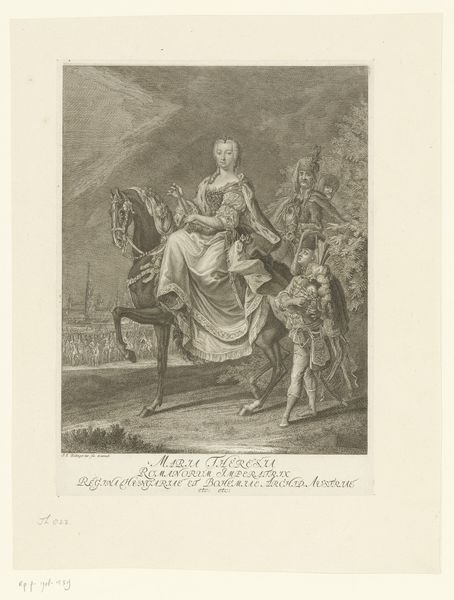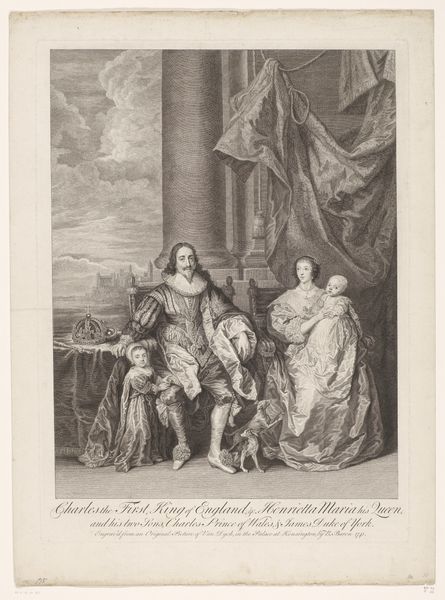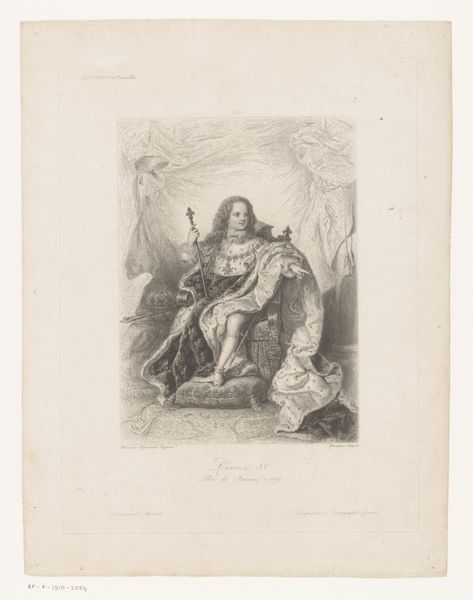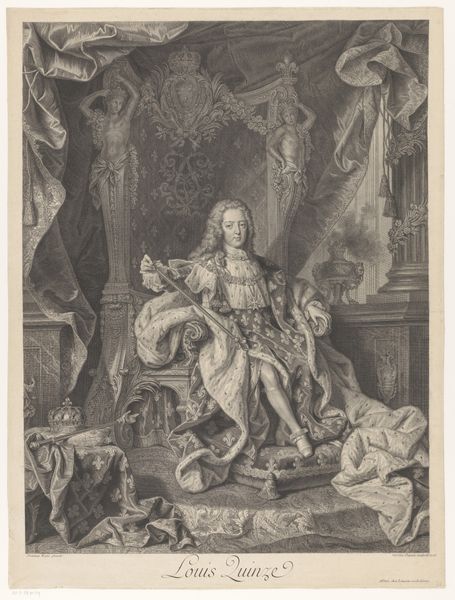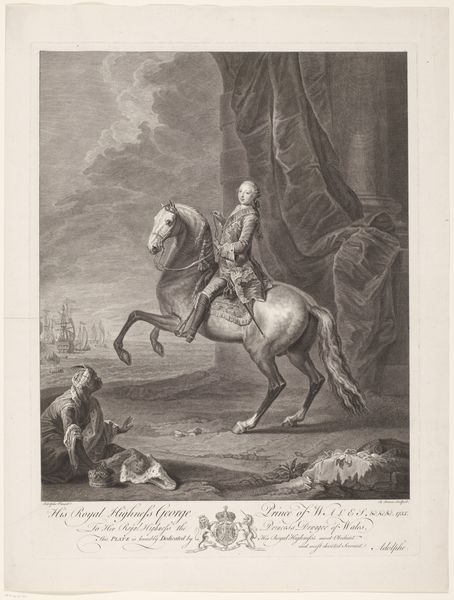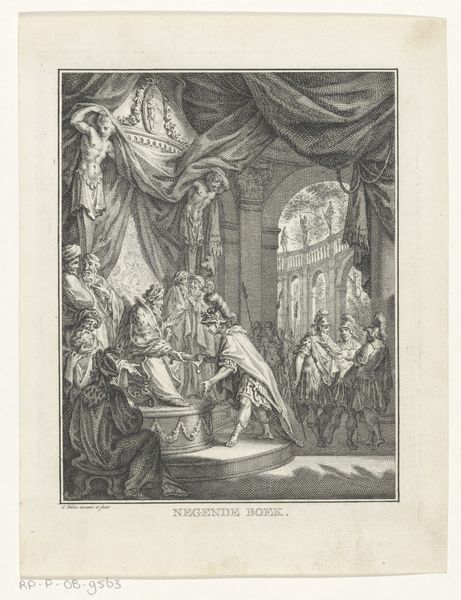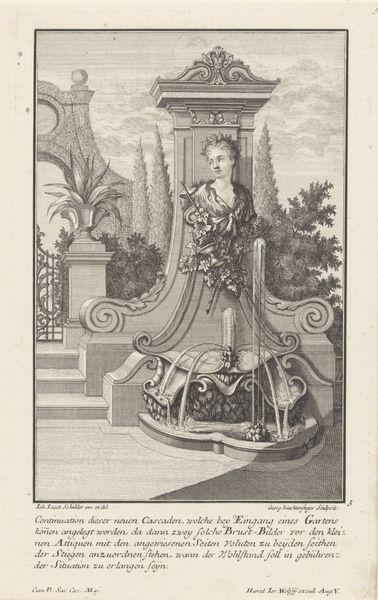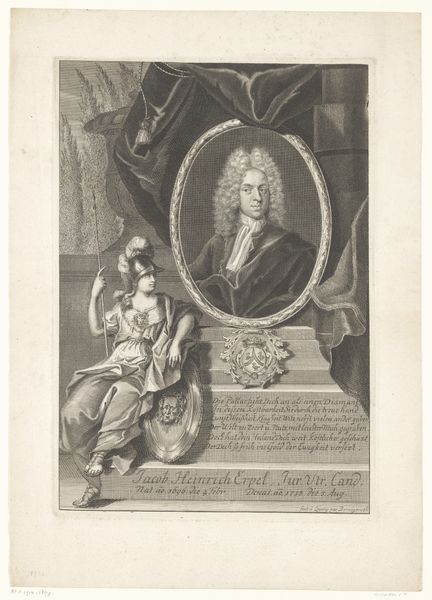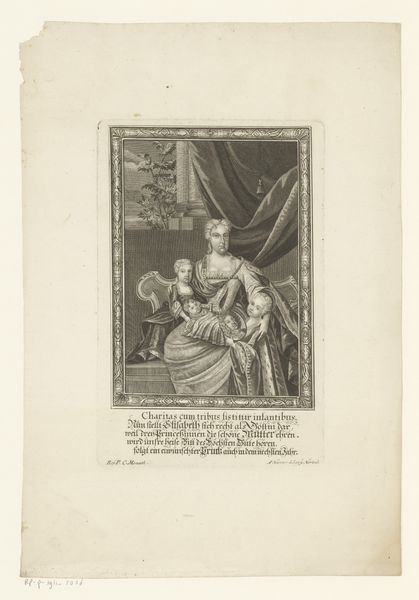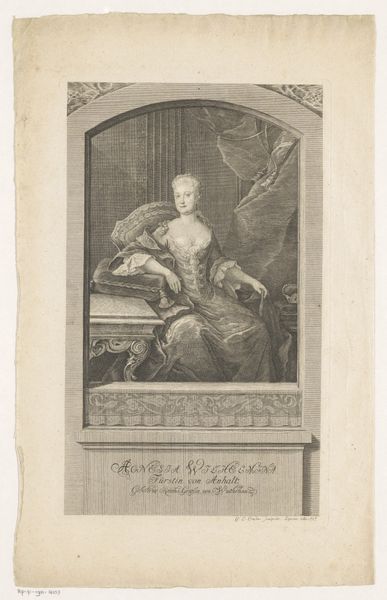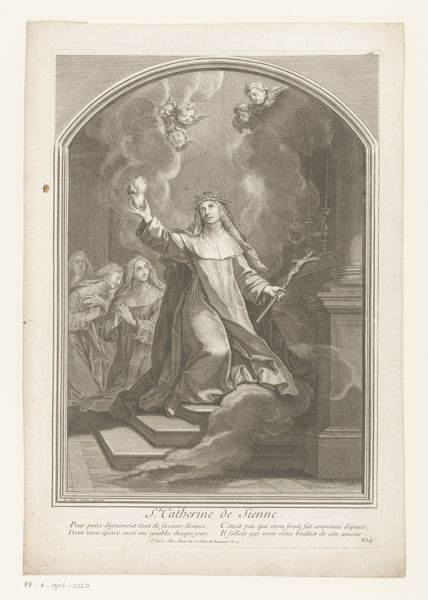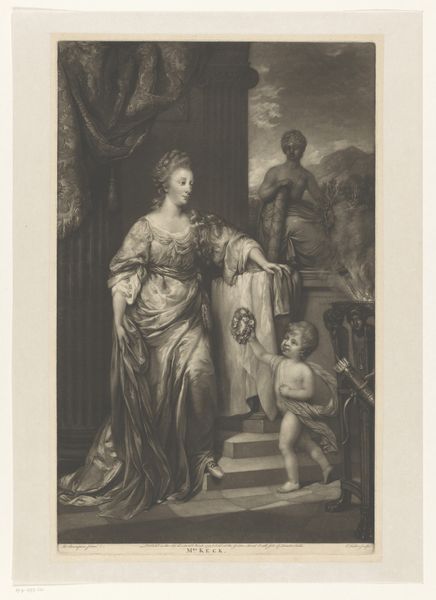
Portret van koning Karel I te paard en Bernard de Nogaret de La Valette, hertog van Epernon 1741
0:00
0:00
print, engraving
#
portrait
#
baroque
# print
#
horse
#
history-painting
#
engraving
Dimensions: height 570 mm, width 424 mm
Copyright: Rijks Museum: Open Domain
Editor: Here we have "Portret van koning Karel I te paard en Bernard de Nogaret de La Valette, hertog van Epernon", a print made in 1741 by Bernard Baron, currently held at the Rijksmuseum. It has a grandiose and performative quality. How do you interpret this work within its historical context? Curator: This piece compels us to consider the performance of power and identity. How does the depiction of Charles I on horseback, accompanied by the Duke of Epernon, reinforce or challenge notions of monarchy, class, and gender roles of that period? What power structures are subtly reinforced here, and who is excluded from this narrative? Editor: So it’s not just about portraying a King, it’s about who gets to be seen, and how they are seen. I guess, beyond just aesthetic admiration, we have to consider social power and its effect in history? Curator: Exactly. Van Dyck's original painting, from which this print was derived, served as a powerful tool in shaping the image of Charles I. Baron's print reproduces and amplifies this image for a wider audience. We must examine the implications of visually constructing the King as a figure of authority. Do you see any hints about the anxieties of the artist or patron present in the piece? Editor: Perhaps the almost exaggerated, ornamented military apparel is an anxious performance to appear masculine. I'm beginning to consider aspects that aren’t visible at first glance. It’s very striking. Curator: Indeed. It reflects how art participates in, and often complicates, the political and cultural narratives of its time. Seeing beyond the surface allows us to deconstruct the visual language of power and privilege, unveiling some difficult social themes of the baroque era.
Comments
No comments
Be the first to comment and join the conversation on the ultimate creative platform.
